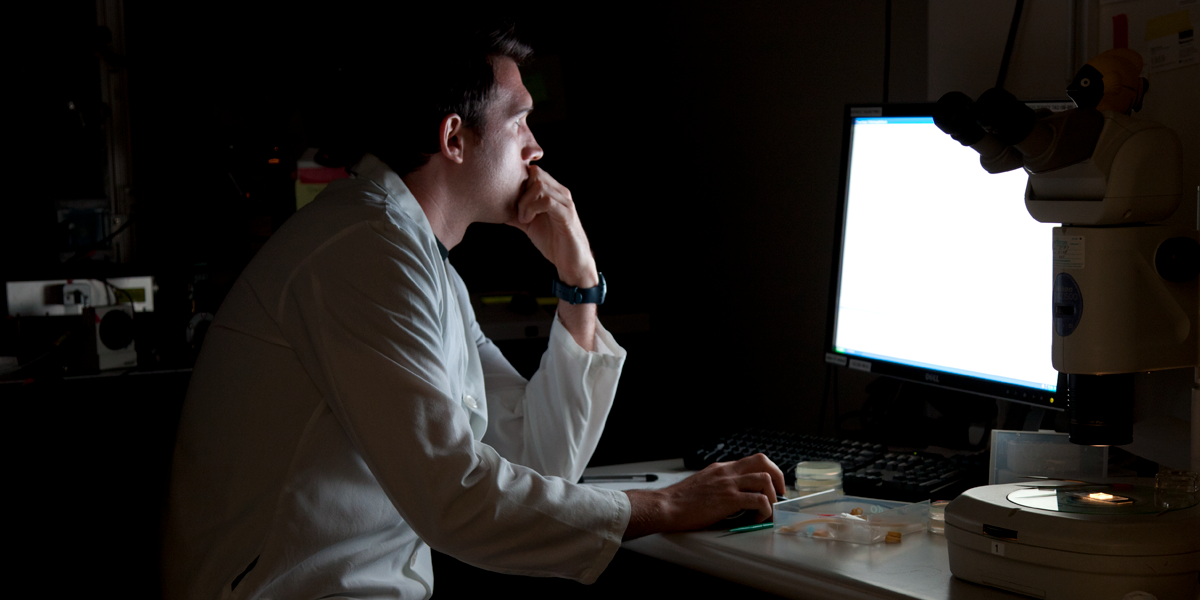On the trail of a cancer virus
Research on HPV leads to a change in U.S. health policy.
When the US government recommended in November 2011 that all boys receive the human papillomavirus (HPV) vaccine to prevent certain types of cancers, Luisa Villa, a Ludwig scientist in São Paulo, Brazil, was not surprised.
Her work helped lead to the decision announced by the US Centers for Disease Control, which guides medical practice across the country. That announcement came as results emerged from an ongoing study she and colleagues at the Moffitt Cancer Center in Tampa, Florida, initiated in 2005, the HPV in Men (HIM) study. In the study, approximately 4,300 men from Mexico, the United States and Brazil are being monitored for infection with HPV.
HPV is best known as a cause of cervical cancer in women. And a vaccine, which Villa also helped evaluate, has been available for girls and women since 2006. But the virus is also associated with penile, oral, head and neck, and anal cancers, which afflict men. Such HPV-associated cancers affect 7,500 men each year in the United States alone.
Until recently, researchers had only a rough idea how prevalent the virus was among men. The HIM study was designed to address this issue. Last February, Villa, who coordinates the Brazilian arm of the study, and her colleagues revealed in The Lancet that about 70 percent of men in the HIM study have the virus—a number in accordance with previous, smaller studies.
What’s more, the most oncogenic infections take a while to clear from the body—about 12 to 19 months for infections with HPV16, the strain most commonly associated with cancer. Those numbers mean that a high proportion of men are at risk for HPV-associated cancer, and that many are probably passing the virus back to their sexual partners. These numbers—along with studies from other groups—helped convince the Centers for Disease Control that vaccinating boys would put a dent in cancer incidence in males, and help prevent transmission of HPV to females.
“We now have a better view of how males are also susceptible to transmission and infection with HPV,” says Villa.
Counteracting cervical cancer
Villa’s current work has roots in an HPV program that was established in the early 1980s, when she first joined the Ludwig Institute based in São Paulo.
“Back then we were only just beginning to find some of these viruses in tumors,” she says. Her mentor, Ricardo Brentani, who directed Ludwig’s research efforts in São Paulo from its inception in 1983 to 2005, had just returned from a meeting with his friend Harald zur Hausen, who later won the Nobel Prize for discovering the role of HPV in cervical cancer.
“After his conversation with zur Hausen, Brentani said, ‘Why don’t you look at this; it might be something interesting,’” recalls Villa. “This was the start of a long process.”
Brazil has an especially high incidence of cervical cancer. And, as Villa and her colleagues later discovered, HPV infection rates are also high in the country. This has made the program at São Paulo a hub for studying HPV transmission and testing vaccines.
In the 1990s Villa and colleagues at McGill University in Montreal recruited about 2,500 women for a study that led to a series of groundbreaking findings about HPV biology. For instance, they found out why only some women develop cancer, often years after first contact with the virus. Most women fight off the virus successfully, the researchers found. In a few individuals, however, the infection persists, particularly with high-risk HPV strains, and ultimately increases risk for development of premalignant lesions in the cervix that eventually lead to cancer.
Villa also partnered with Merck to show, in a pivotal 2005 study, that the drug company’s HPV vaccine was safe and effective. This work paved the way for eventual approval of the vaccine to combat cervical cancer. More than 530,000 women were diagnosed with cervical cancer worldwide and 275,000 died from the disease in 2008, the year zur Hausen won the Nobel Prize for his work with HPV.
Villa’s work to combat HPV has earned her a reputation as an exacting scientist who has had a significant impact on public health. “Villa’s work was of particular importance for Central and South America, where cervical cancer is still highly prevalent. Her work has been instrumental in providing data crucial to the design, development and approval of vaccines against HPV,” says zur Hausen, a former scientific director of the German Cancer Research Center in Heidelberg and a member of the Ludwig Scientific Advisory Committee from 1996 to 2005.
In the coming years Villa and her colleagues will continue to assess the impact of HPV in men, as data from the HIM study continue to emerge. In 2011, results from the HIM study included an analysis of HPV types most associated with genital warts and oral cancer, and an analysis of the association of HPV with number of sexual partners. In addition to running large human studies, Villa leads an active research program in the molecular biology of HPV infection. She is examining questions such as why infection leads to cancer in some individuals but not others—do susceptible people produce certain molecules in response to infection, and is there something special about their genetic makeup? Do some variants of the virus cause cancer more often than others?
Villa credits the success of her HPV program to the support of Brentani, who passed away last year, seven years after Villa took over his position to lead Ludwig’s research efforts in São Paulo. Villa also credits the long-term vision of the Ludwig Institute, which provided funding through lean years when results were few and far between. “We have always had the infrastructure to run the large projects needed in a very competitive way,” she says.
